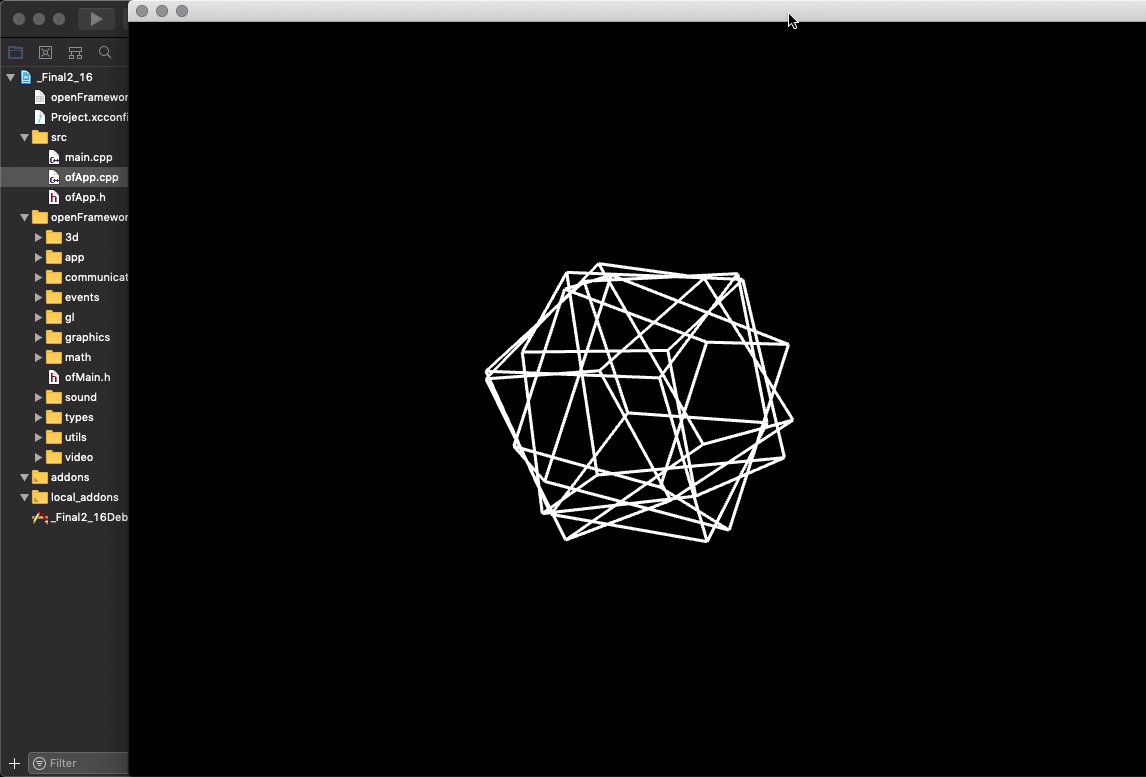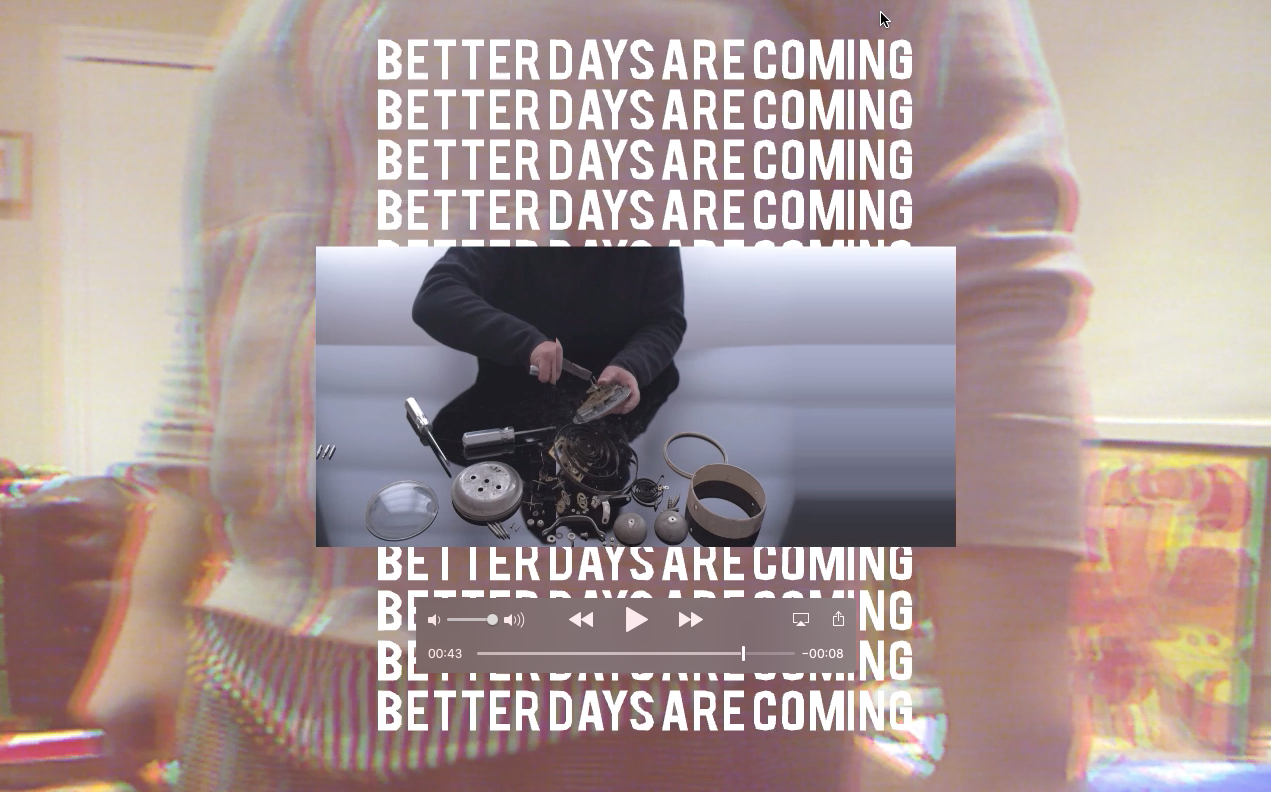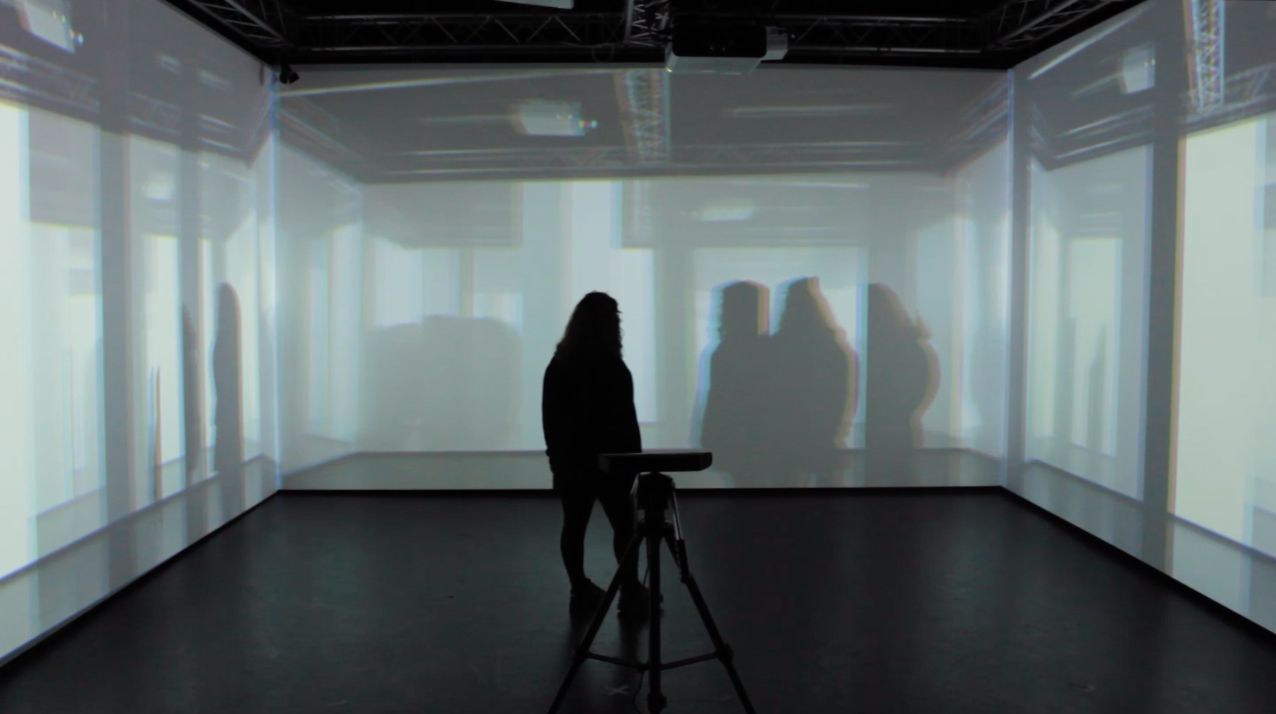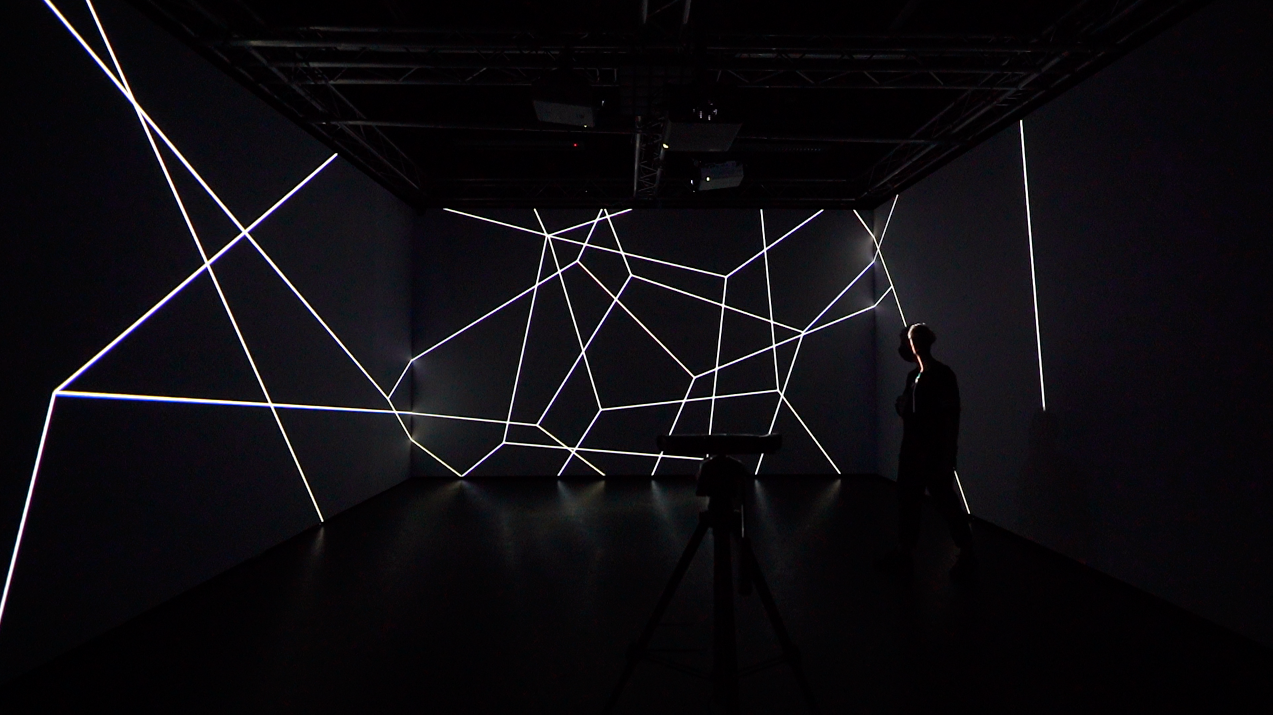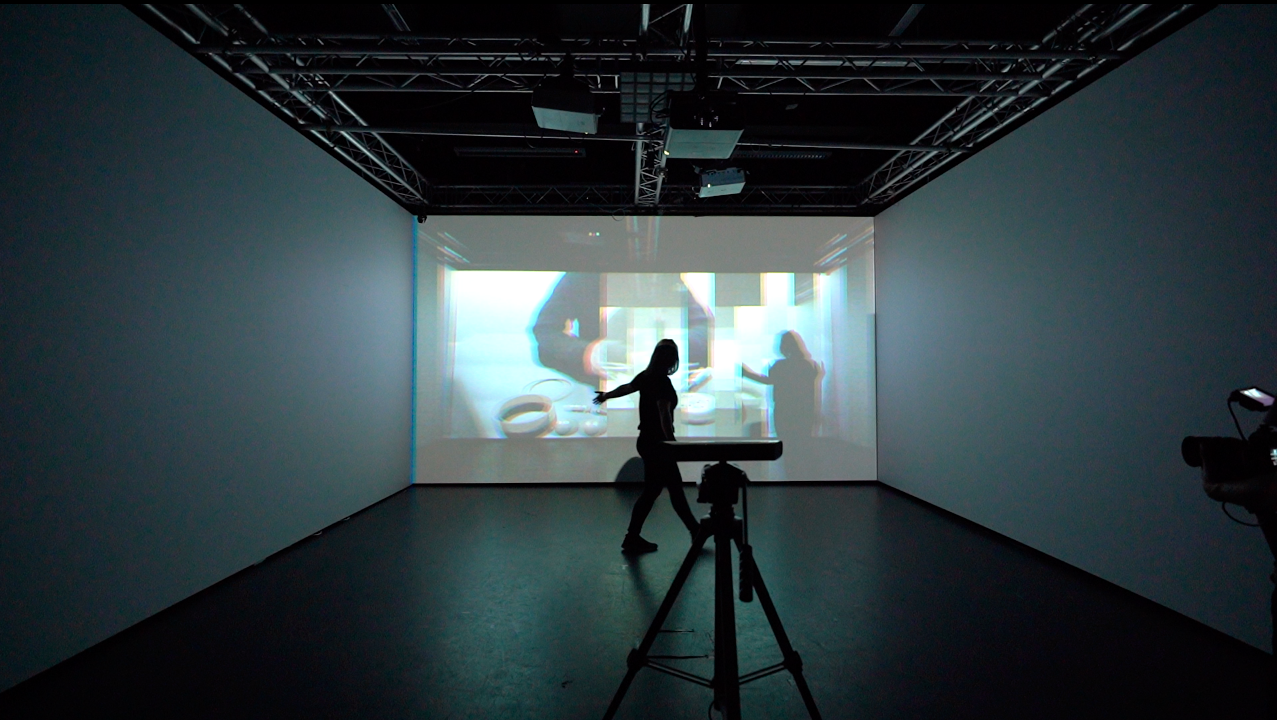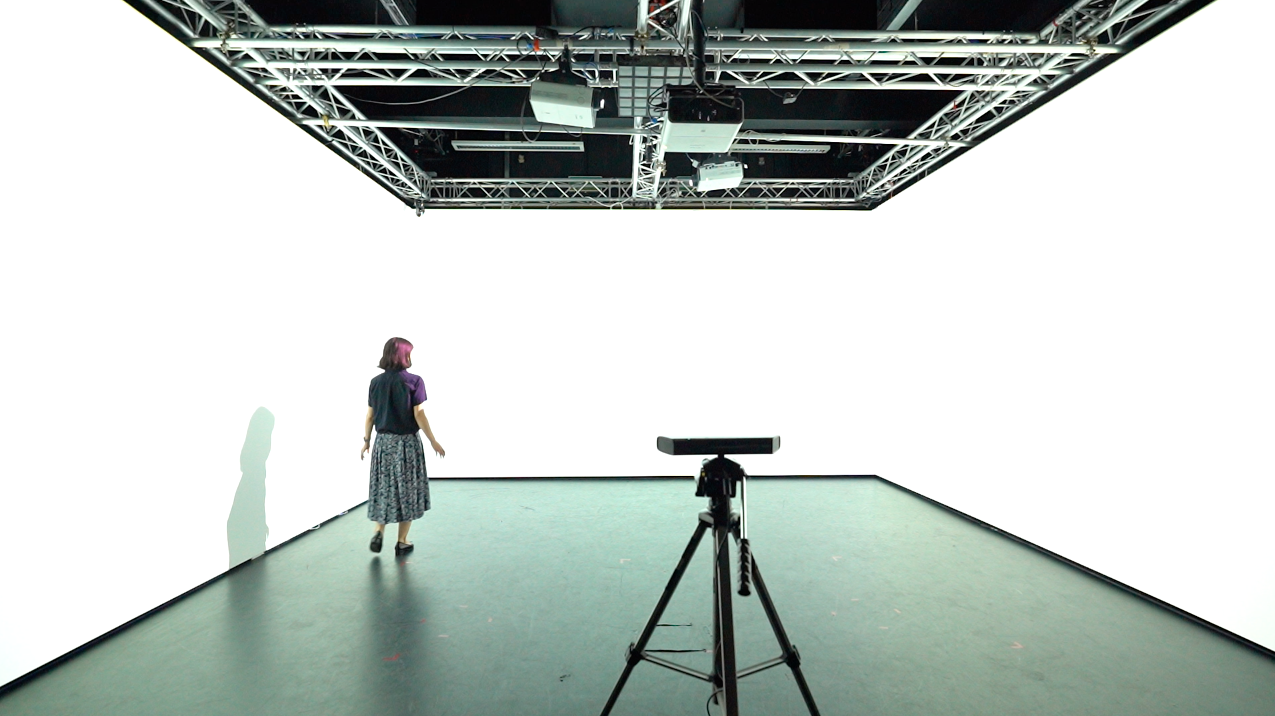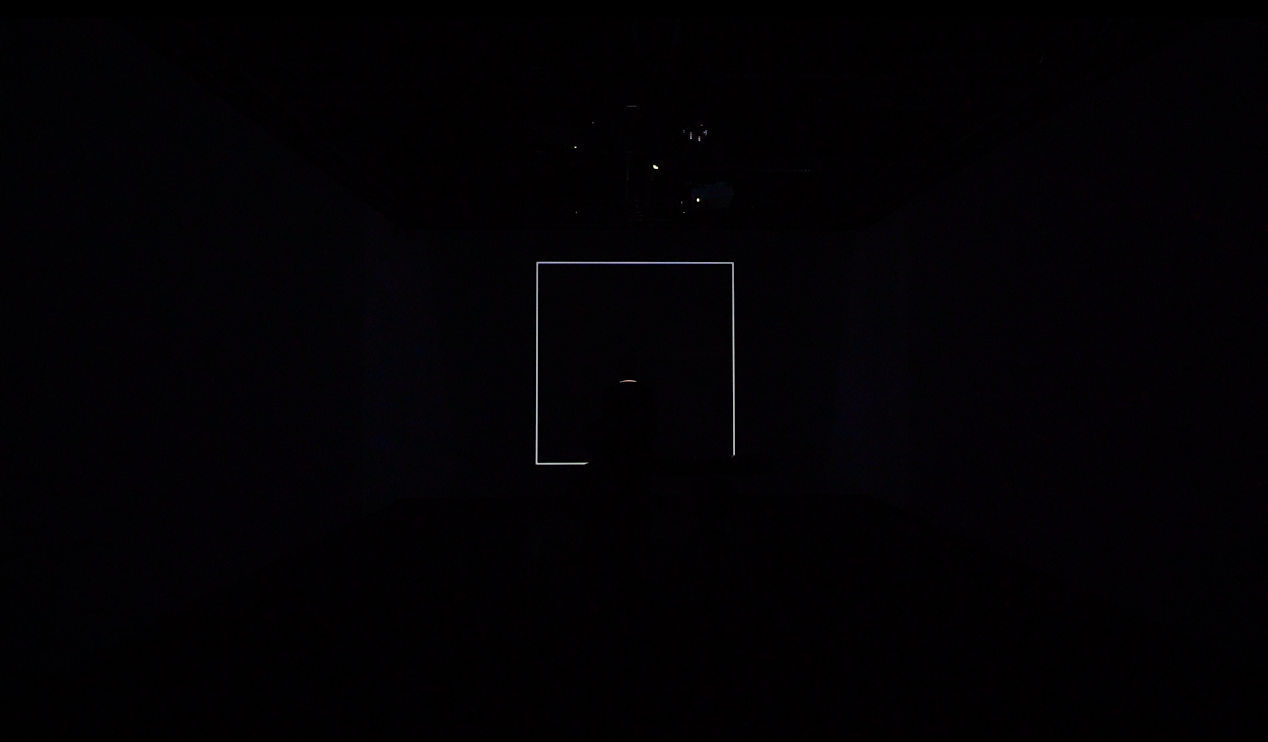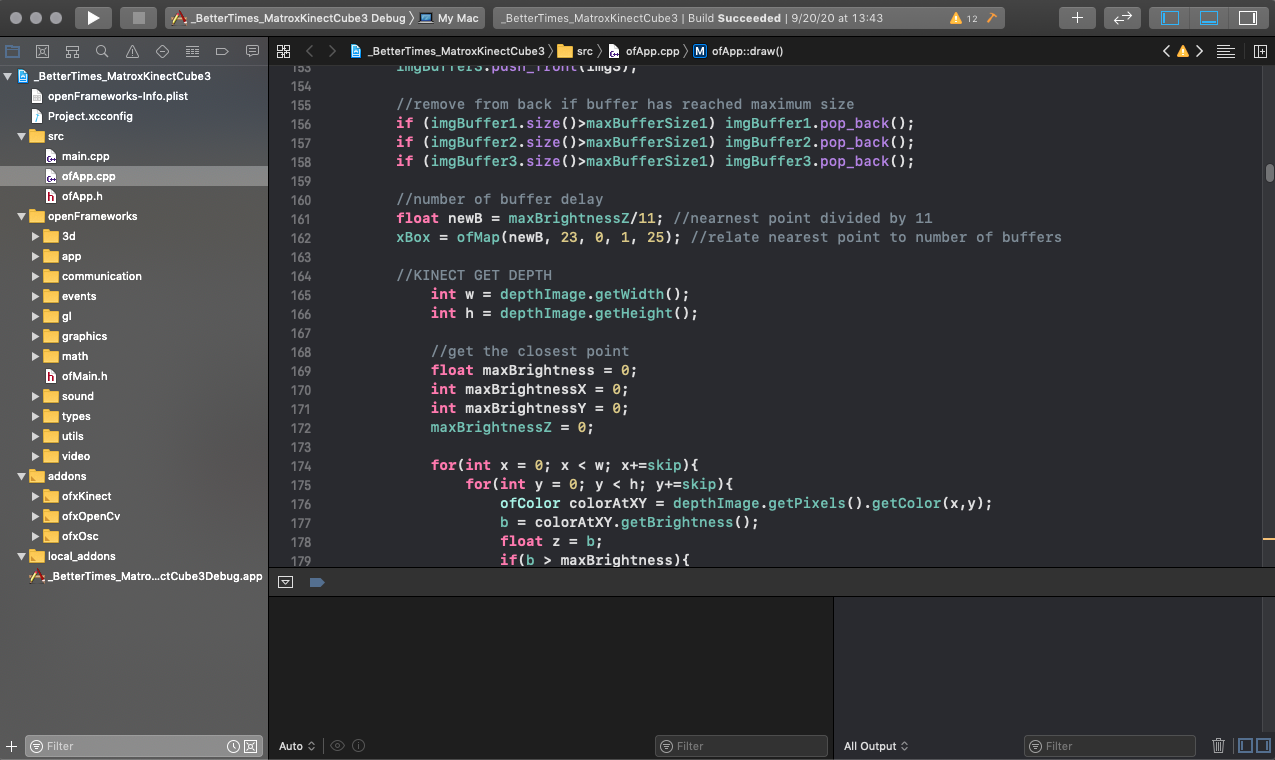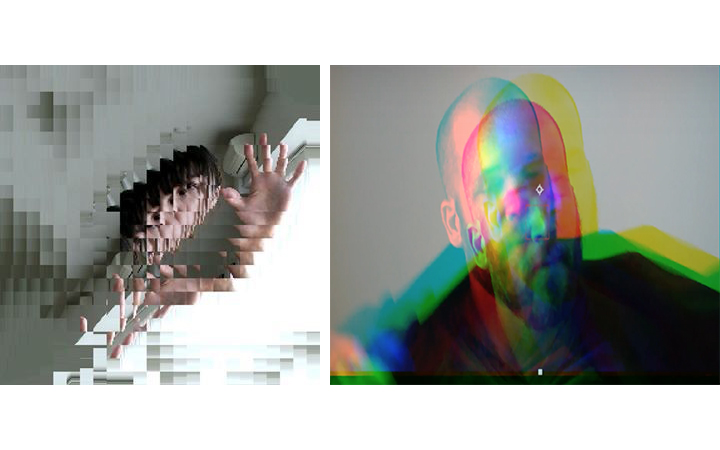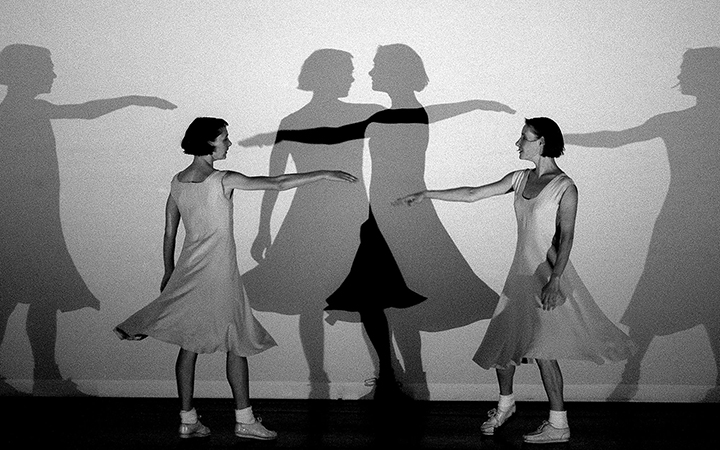Better Times Are Coming
Immersive audiovisual interactive installation that simulates the timing of a clock. It varies in rhythm, graphics and acoustics in relation to the movement of the audience in space.
produced by: Camila Colussi
Introduction
"Better Times Are Coming" explores the concept of time from a relational perspective. The piece uses a Kinect360 to measure distance, following the movement of the audience in space. Sound gets slower or faster, dry or full of reverb. Visuals mirror the exhibition space at the same time that they overlap their own image into feedbacks, delays and repetitions. Meanwhile, the sound of a female voice speculates about a time-revolution.
Time, not just something that happens to us, but something that we are part of, as bodies in relation, affecting our surroundings.
Concept and background research
The project is based on the unfinish work “TimeMachine”, which approachs to Einstein Relativity Theory, in which time, space and the subject are in mutual relation. I was wondering: how could I experience this time/space flexibility? A kind of flexibility that seems to stand in opposition to the accuracy of the atomic clocks that dominate our daily productive life. I found an approximation through the creation of a sound interactive object that could simulate the ticking sound of a clock but varying in rhythm and acoustics as you move around it.
This use of sound is based on psico-acoustics and reverb. Reverb is the amount of reflections produced when soundwaves collide with the surfaces of a determined space. Humans identify reverb due to a temporal effect: these reflections are heard as sound decay. Reverb is one of the sound manifestations that could give us an idea of the spatial characteristics of the place where the sound has been reproduced. Then, a sound clock that varies in rhythm and acoustics could have brought an approximation to the flexibility of time and space just by listening.
Further than an issue of representing time-space relativity, the project grew into a more socio-political perspective, questioning the way we measure and experience time in the 21th century. Jonathan Crary in “24/7 Late Capitalism and the end of sleep” analyses this problem in terms of productivity and consumerism. Byung-Chul Han in “The Scent of Time: A Philosophical Essay on the Art of Lingering” takes a similar view but observing the loss of duration and contemplation in our contemporary cultures. Both authors highlight a “lack-of-time”. They point out the atomization of time-space by the use of new technologies, the loss of sleep, the loss of sense and direction, among others. In conclusion, no time for waiting, no time for enjoying duration. It’s been suppressed the taste for moving across the experience of time. Byung-Chul Han concludes that contemplation and duration could bring it back as a possibility of re-connection with ourselves and the world.
“TimeMachine” evolves into “Better Times Are Coming” as an audiovisual immersive interactive installation that uses feedback, delays, repetitions, and watching yourself in movement and connection with what is around you. Reverb is taken as something more than a psychoacoustic effect, but also as a provocation to listen duration. Listening and not just hearing, observing and not just seeing. Moving in relation.
Finally, the concept of history also enters in the time spectrum of the piece.
Walter Benjamin in “Theses on the Philosophy of History”, questions the concept of history as a linear and consequent narrative of facts. Benjamin writes at the specific moment of the Nazi in Europe. From his perspective, fascism can’t be the only possible and consequence reality. He claims more from time and history. Let’s go back into the archive and reconsider the past, so we can open the possibilities for the future. After one year that a civil revolt started in Chile —country I beyond—, a similar feeling crossed my reflections on the current work. The reminders of the Chilean dictatorship came into the present. History repeats. No progress. No alternatives. What is our relationship with time, then? The project doesn’t give an answer but opens a space to think about time in terms of sound, physics and history from a relational way.
Technical
The project uses a Kinect360 as RGB camera and depth sensor, and it was developed in openFrameworks (graphics) and max.MSP (sound).
Kinect360 senses the nearest point in space, sending this data to modify sound rhythm and acoustics, and to draw the image of several division delays. As you get closer to the sensor, the sound gets slower and full of reverb. As you move away, sound returns to the pulse of the ticking of a clock but also increases the number of division delay images.
Kinect360 was chosen as a depth sensor due to the long-distance range of 4-5 meters and its data stability in comparison with other sensors.
SOUND
Sound was developed in max.MSP. The sample of a clock is modified in speed and reverberation. The narrative of the female voice that crosses the project was build using a free textToSpeech app. This voice was also worked in max.MSP in terms of reverb to highlight the acoustic references mentioned in the piece during certain times of the speech.
IMAGES
A different source of images composes the narrative of the piece. Graphics, video and real-time camera-image. Only the last one is interactive to the movement of the audience. This decision was taken to allow the audience to explore interaction but to do not stick on it, so they could also pay attention and observe and listen.
The RGB image captured by the Kinect mirrors the exhibition space in several division delays. The amount of divisions, as well as the duration of the delays, is in relation to the movement of the audience. This destabilize the visuals in a more complex and chaotic environment. Also, the camera is reproducing its own projected image, creating feedback. This effect was integrated into the piece, showing it and making it part of the composition in combination with the video images that also remain in the feedback.
Future development
Considering the work as a long-time installation, I would like to maintain (A) as the core of the piece for longer periods of time, but being interrupted by (B) and other narratives across its course.
On the other hand, the project currently works by sensing the nearest point to the camera. I would like to evolve this aspect in a way that I could sense more people in space, and also more detailed kind of movements.
Self evaluation
In general, I consider that I tried to push the project as best as I could, conceptually and technically; and at the end it worked fine, even when there are things that I would like to improve as I mention previously.
First of all, and taking as point of reference the final exam for WCC, I took the project further the initial ideas around Einstein’s Relativity Theory. I tried to build sort of an audiovisual/political provocation through the production of visuals and a sound narrative that speculates and questions issues about time, sound and history.
In technical terms, the integration of different source of graphics, their display in 3 different projections and their coordination among themselves and also with sound, was an important task. The use of 3 projections was a crucial decision after I tried only one frontal projection. In this scenario the audience tented to stand at the back, just looking, without any attempt of movement or interaction. This result was the opposite of what I wanted to achieve with the project, so I had to re-formulate it and I built the current immersive 3 projections installation that is more evocative of movement.
Another crucial decision was choosing room G05. My first intention was using one of the classrooms of the church, but when I tried to do it, the work looked awful: the interaction needed more space to move around and also a room with cleaner walls (the classroom’s walls were full of church decorative architecture details or electrical pipes). Consequently, I tried G05 and it changed drastically.
Finally, I consider that one person at a time interaction worked well in the current times of pandemic, but it will be not enough for future normal exhibitions in which more people might be in the room. So, even when it was not a problem now, it is an aspect that I need to improve.
Other critical aspects are related to sound, which could be smoother, needing more work than the one I achieved; and also the framerate performance, which was running quite slow.
References
CONCEPTUAL REFERENCES
Theory of General Relativity, Albert Einstein, 1905.
24/7 Late Capitalism and the end of Sleep, Jonathan Crary, 2013.
The Scent of Time: A Philosophical Essay on the Art of Lingering, Byung-Chul, 2017.
Theses on the Philosophy of History, Walter Benjamin, 1939.
CODE REFERENCES
OpenFrameworks code for Kinect360 and BufferDelay effect were developed based on class examples by Theo Papatheodorou, Workshops in Creative Coding 2, Department of Computing, Goldsmiths University of London (2020).
VISUAL REFERENCES



































































